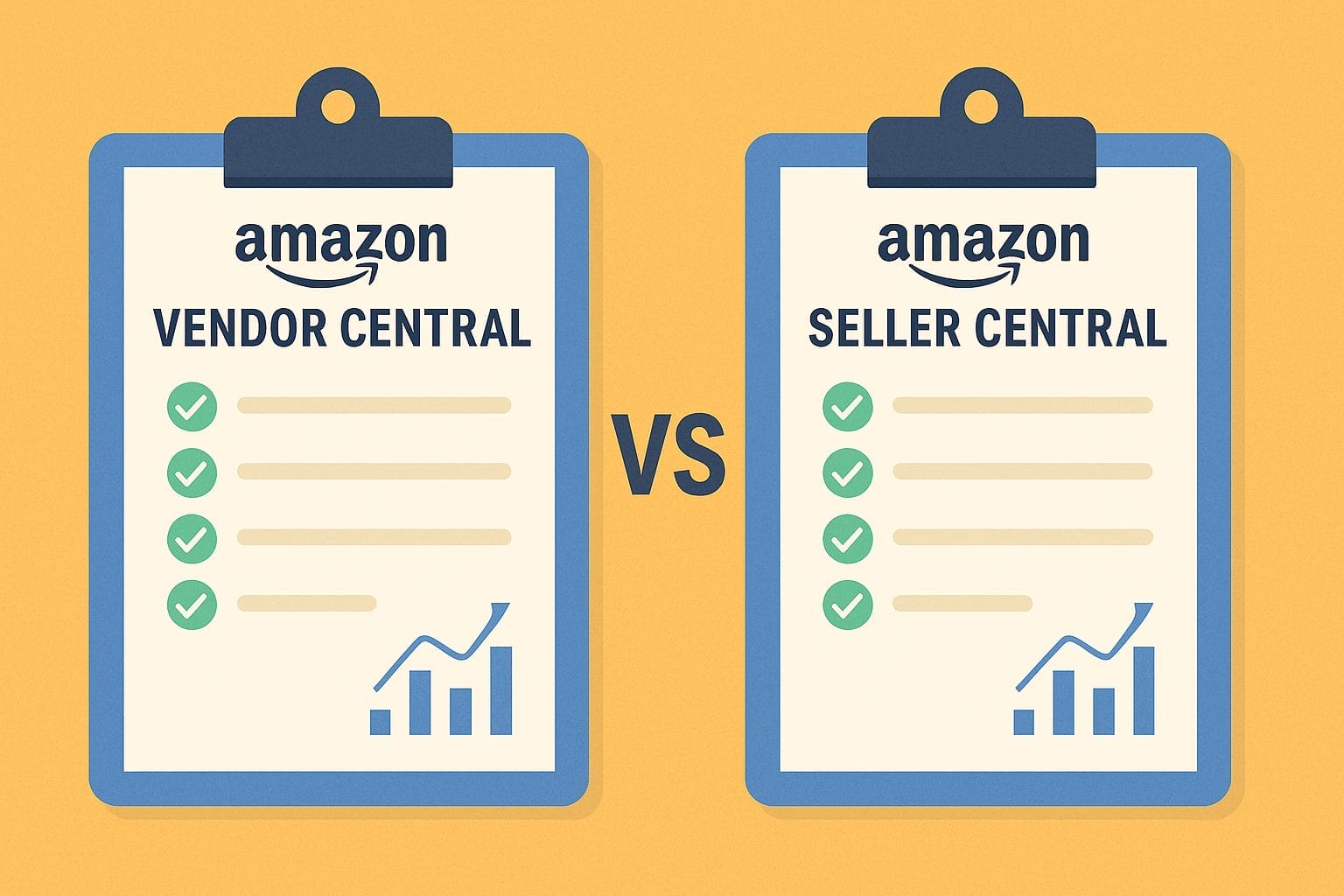Amazon Vendor Central vs Seller Central: Which Is Best for Your Brand?


When it comes to selling on Amazon, choosing the right platform can significantly impact your business. Amazon Vendor Central and Seller Central offer distinct advantages, each catering to different business models. In this post, we’ll break down the key differences between the two, focusing on pricing control, profit margins, and the relationship you’ll have with Amazon.
On Vendor Central, Amazon buys your products at wholesale prices and resells them. You have limited control over pricing, as Amazon sets the retail prices. This can reduce your ability to maintain higher profit margins. Learn more about Vendor Central on Amazon.
With Seller Central, you control the pricing and inventory. You can set your own prices, run promotions, and manage your inventory in real-time. If maintaining higher margins and flexibility is crucial for your brand, Seller Central is the better option.
Pro Tip: Seller Central gives you more freedom in managing product prices and margins, while Vendor Central is more suited for brands looking for a hands-off distribution model.
Because you’re selling your products at wholesale prices to Amazon, your margins are typically lower. Amazon handles distribution and marketing but at a cost.
With Seller Central, you keep a larger portion of the retail price. After accounting for fees (FBA or referral fees), you still retain more profit compared to Vendor Central. See more about Amazon Seller fees.
Pro Tip: If maximizing profits is a priority, Seller Central is your best bet. Vendor Central works for brands that prioritize exposure over higher margins.
On Vendor Central, Amazon acts as the retailer. They handle everything from pricing to customer service. This relationship gives you less direct interaction with customers but more automation in the process.
Seller Central gives you direct access to Amazon’s marketplace and customers. You manage product listings, customer service, and returns, offering more control over your brand’s presence. Explore Seller Central’s features.
Pro Tip: Choose Vendor Central if you prefer Amazon to take the lead on most operations. Opt for Seller Central if you want more direct engagement with your customers and more control over your brand’s messaging.
In Vendor Central, you can use Amazon’s marketing services, but your options are more limited. You may have to work with an Amazon account manager for best results. Learn about Amazon Marketing Services (AMS).
Seller Central provides access to robust advertising options like Sponsored Products, Sponsored Brands, and Amazon DSP. You can run targeted ad campaigns and track their performance more closely.
Pro Tip: Seller Central’s advanced advertising tools allow for more targeted campaigns, making it ideal for brands focused on growth and visibility.
The decision between Amazon Vendor Central and Seller Central depends on your business priorities. If control over your brand and maximizing profits are essential, Seller Central is the way to go. However, if you want a more automated process with less hands-on management, Vendor Central may be a better fit.
Need help navigating Amazon’s platforms? Contact us for expert guidance in optimizing your Amazon strategy and boosting your brand’s success.
Learn more about how we can help your Amazon business succeed!